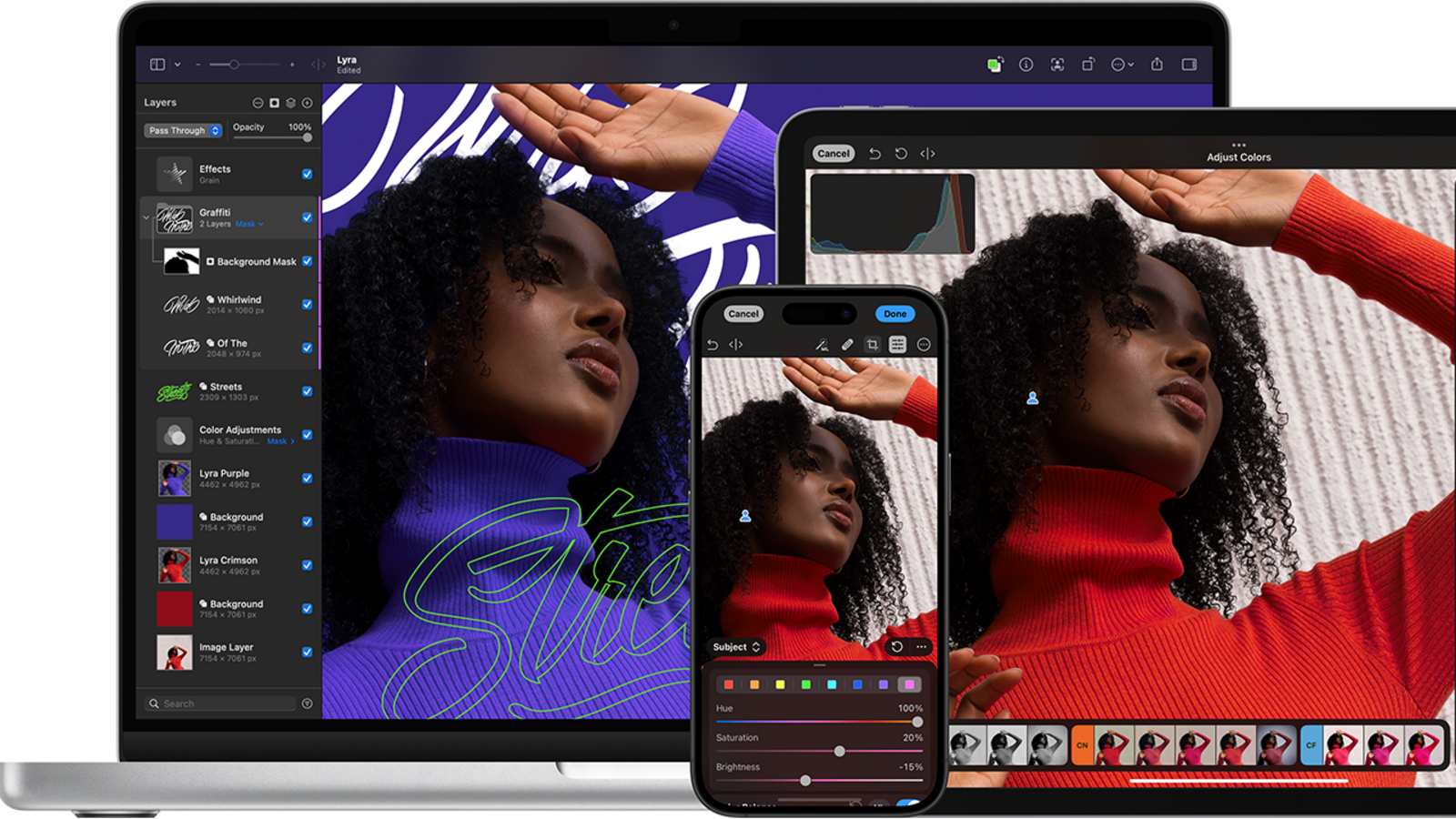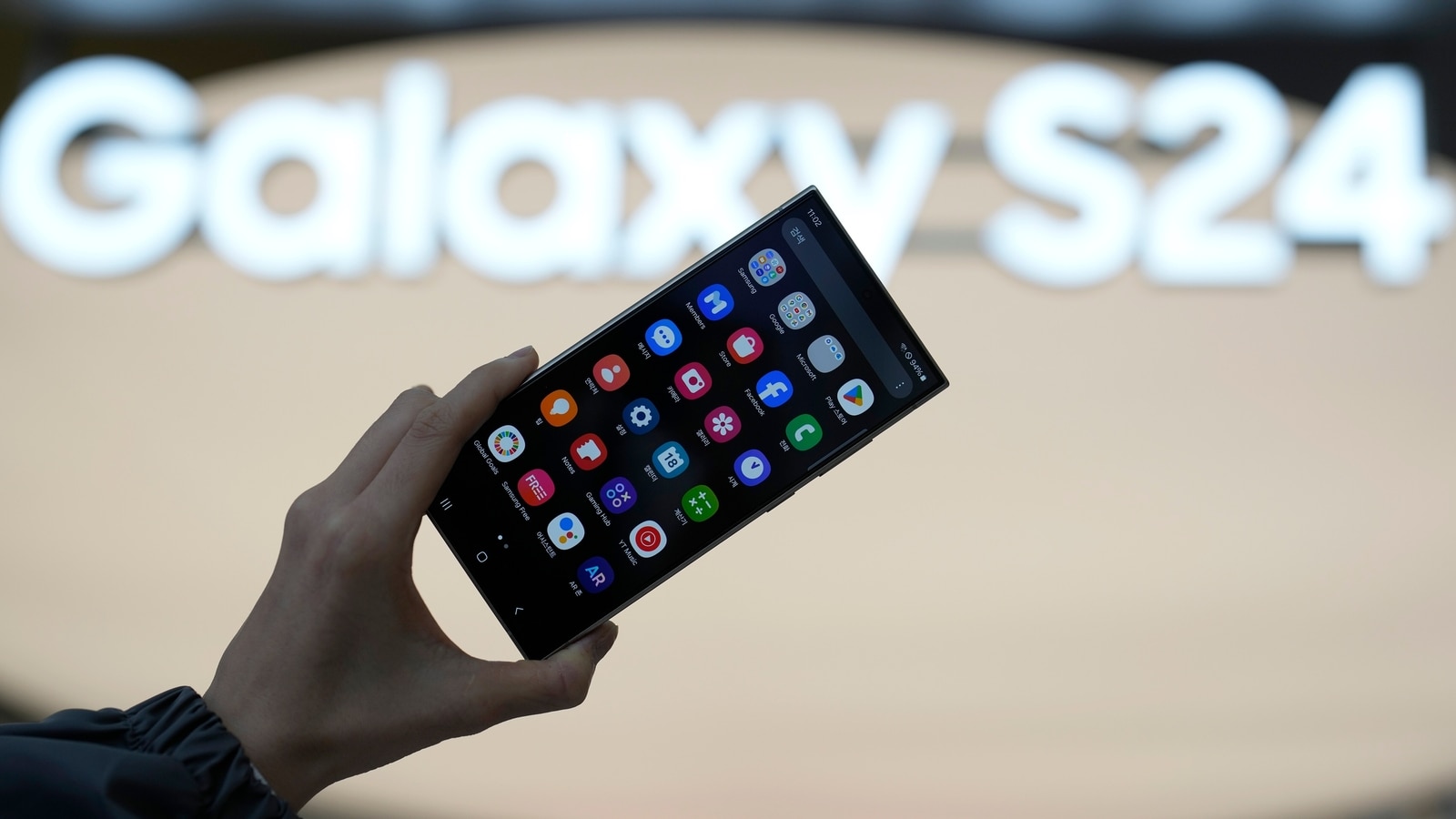[ad_1]
Pixelmator, for those who may not be in the know, was founded in 2007 and has since made iOS, iPadOS and macOS focused (and exclusive) photo editing apps for different user demographics — there’s the app by the same name, Pixelmator Pro which is a powerful photo editing tool for professionals using Macs, and Photomator, which tries to (and successfully does) replicate a lot of that for a consumer audience on an iPhone, iPad, Mac and Vision Pro. It is only logical for Pixelmator to be part of the Apple fold, and there are a few reasons for that.

With Apple having the keys to Pixelmator, and Canva’s Affinity plus Phoenix AI portfolio developing rapidly, Adobe must be getting worried.
Pixelmator and Photomator, as they were built and refined over the years, felt quite at home atop Apple’s software platforms. Quite, built for Apple. Almost, as if they were built by Apple. Secondly, the timing of this acquisition means you cannot help but be reminded of the Aperture, which last received an update around this time, a decade earlier. Third, and this is for a long-term vision that Apple is surely looking at — the complete suite is now ready, with Final Cut Pro for video editing, Logic Pro for audio editing, and Pixelmator for image editing. This gives Apple another plug in the services business, which is pivotal for revenue, and doing well too. Alongside, this gives Apple access to technology that can easily find its way within the Photos app on iOS. Perhaps something extra there for Apple One and iCloud+ subscribers, in due course of time?
Canva’s reached $32 billion valuation, up from $26 billion in April. That’s with 200 million monthly active users, smart acquisitions and AI
Amidst all this, the most worried would perhaps be Adobe. Apple now has the keys to Pixelmator Pro and Photomator. It can potentially do a lot. Alongside, Canva is building with Affinity, as well as the recently acquired Leonardo.ai’s Phoenix models that have already given Canva’s suite new capabilities such as the Dream Lab. Apple’s editing troika is complete. Canva’s is almost too. But none of this will happen overnight. Or even in the next twelve months. If at all a shift has to happen. Adobe’s strength is not just its massive portfolio of focused apps, or the adoption of a robust AI layer, but also a massive user base that have been using their apps for years and years. They’ll not move out in a hurry. In the meantime, Adobe will have to perhaps simplify subscriptions which many have criticised it for (particularly cancellations, mid-term) and even take the hurt from delinking a few apps from the revenue stream. Acrobat comes to mind. It may no longer be cool to ask for someone’s credit card details, for editing a PDF. Firefly or no Firefly.
Creative platforms, a space that’s ripe for investment. Canva, just this week, announced the milestone of $32 billion in valuation, which is up from $26 billion in April. That’s with 200 million monthly active users. Alongside a neat product that was the simpler, more cost effective alternative to a lot of Adobe apps for many a user at home and in office, they’ve built on that with smart acquisitions and even smarter use of AI which is integrated within the Canva platform as well as the reason for new features (Dream Lab, is one of those additions).
More from our exhaustive coverage of creative apps
SOUND

This is as unique a proposition as it can get, with affordable true wireless earbuds. Sustainability, environment and an extensive use of recycled plastics. That’d perhaps explain why Skullcandy finalized on a medley of blue and grey for a colourway they refer to as ‘Glacier’, for the EcoBuds. At least, it is a far cry from the black and white colours that are predominant with earbuds. Here’s a summary of their pitch for the environment—they claim a 50% reduction in EcoBuds’ carbon footprint as compared with similarly priced and spec-ed wireless earbuds, alongside the use of 65% recycled plastics. The Skullcandy EcoBuds, which costs around ₹7,199 are well-built earbuds.
The reason I wanted to experience the EcoBuds is to see how Skullcandy have built their traditionally strong audio experience, around this new portfolio of materials and design elements. It is a mix of experiences, to say the least. The company doesn’t detail the specifics of the audio driver inside each earbud, but it must be noted that the sound quite simply delivers for the most part. There is a definite leaning towards neutrality on the equalizer out of the box, which is good news if the depth and detailing of a soundstage with various instruments in the mix, is important for you.
At the same time, I did notice some higher frequencies sound a tad sharper than perhaps ideal. If bass heavy music makes up most of your playlist, there is no shortage of the thump you’d expect from lower frequencies. That said, the bass does feel tight, and in some tracks, a bit restricted. Objectively, the Skullcandy EcoBuds work for most music genres, as well as use cases that involve vocals, such as podcasts.
There are certain choices that Skullcandy has made, which may perhaps divide opinion, the charging case, for instance. Or should I simply call it a storage case or a dock? First, the design of this case is such, there is no lid. That means the earbuds are visible and accessible at all times, it also means potentially unnecessary exposure for the buds. Such as if this case falls to the ground (these will fly out, irrespective of the magnets in play), or if you slide these into a cluttered handbag. This dock also doesn’t have a built in battery (that’s contrary to conventional TWS wisdom) — is this a shortcoming, considering these buds lasted close to 7 hours of music playback during tests? I’d say so, purely because you’re missing out on convenience.
Secondly, the eccentricities of this dock extend to not having a charging port, but instead a short 1.5-inch integrated USB-C cable that has to be directly plugged into a charger or a port on your computer. If it’s the former, it’ll dangle the entire time you leave these in for charging. If it’s with a computer, you may find this getting into the way of other connected peripherals, such as a printer cable or external storage.
Would it be an apt summary to say that Skullcandy’s efforts to make the EcoBuds environmentally friendly and retain the versatile sound signature have worked, but you’ve to really make an opinion about the often impractical charging case that is trying to solve a problem that didn’t exist.
Our take on good (and not so good) audio…
SPECTACLE

Quite as much. Never before has a tech company ever taken it upon themselves to dedicate a new product announcement, each day of the week (almost each day, if we do factor in the Pixelmator development, which intertwines closely with Macs). Apple’s approach, for journalists, was a fairly unique proposition. I am yet to make any opinion on whether this is fun or not. No harm in trying something different, particularly when it involves devices of such importance? Nevertheless, a part of the Mac portfolio received important updates, building on the M4 chip, which itself was joined later in the week by the M4 Pro and the M4 Max (there is no M4 Ultra just yet, in case you’re wondering) and making a case for Apple Intelligence as it arrives steadily.
The ‘colourful’ iMac: The week started off with some bright, cheerful colours. The iMac not only tweaked those colours to look a little different from before, but the M4 chip gives this machine some serious performance. Not something you can say for the all-in-one or AIO form factors for Windows PCs. Here’s a nugget — video and photo editing apps including Adobe Photoshop and Adobe Premiere Pro will be as much as 2.1 times faster, than the iMac with an M1.
Mac mini is, smaller still: Absolutely crazy stuff with the Mac mini. It is significantly smaller than before, and in fact, thereabouts the footprint specs of an Apple TV 4K streamer. The Mac mini was last refreshed with the M2 chip, and this is a significant generational step forward. Apple’s claims peg this at being as much as 6 times faster than the previous generations. And by keeping pricing same as before (thats ₹59,900 onwards; you’ll have to figure a display to go with this), the Mac mini is utmost value for this sort of performance.
While the MacBook Air’s big refresh is awaited, what’s changed for now is baseline memory, up from 8GB to 16GB, across variants.
M4 Pro and M4 Max join the family: The M4 chip that we’ve already seen as part of the iPad Pro devices, as well as the iMac and the Mac mini announced in previous days, can be used in iterations with up to a 10-core CPU, a 10-core GPU and a 16-core Neural Engine. The M4 Pro, also 3-nanometer, builds on that with up to 14 CPU cores, which is further subdivided into 10 performance cores and 4 efficiency cores, along with a 20-core GPU. The M4 Max is configured as a 16-core CPU has 12 performance cores and 4 efficiency cores, with a 40-core GPU. For now, only the MacBook Pro 14-inch and MacBook Pro 16-inch get these chips as an option.

MacBook Pro has a lot more power: You’ll be spending top money if a MacBook Pro is on your shopping list. No surprise then, Apple’s introduced the two (even) more powerful M4 chips, with these laptops. From the outside, not much has changed with the design or colours. The changes are under the hood, with Apple claiming that the new MacBook Pro are up to 3.4 times faster than the MacBook Pro variants with the M1 chip, 3 times faster than the M1 Pro and 3.5 times faster than an M1 Max. The entire refreshed MacBook Pro line-up for 2024 features the Liquid Retina XDR display, with up to 1000 nits of brightness, and also gets the optional nano-texture coating that is available for the colourful iMac as well as the Studio Display.
Our coverage, decoding what the changes mean…
[ad_2]
Source link














Leave a Reply